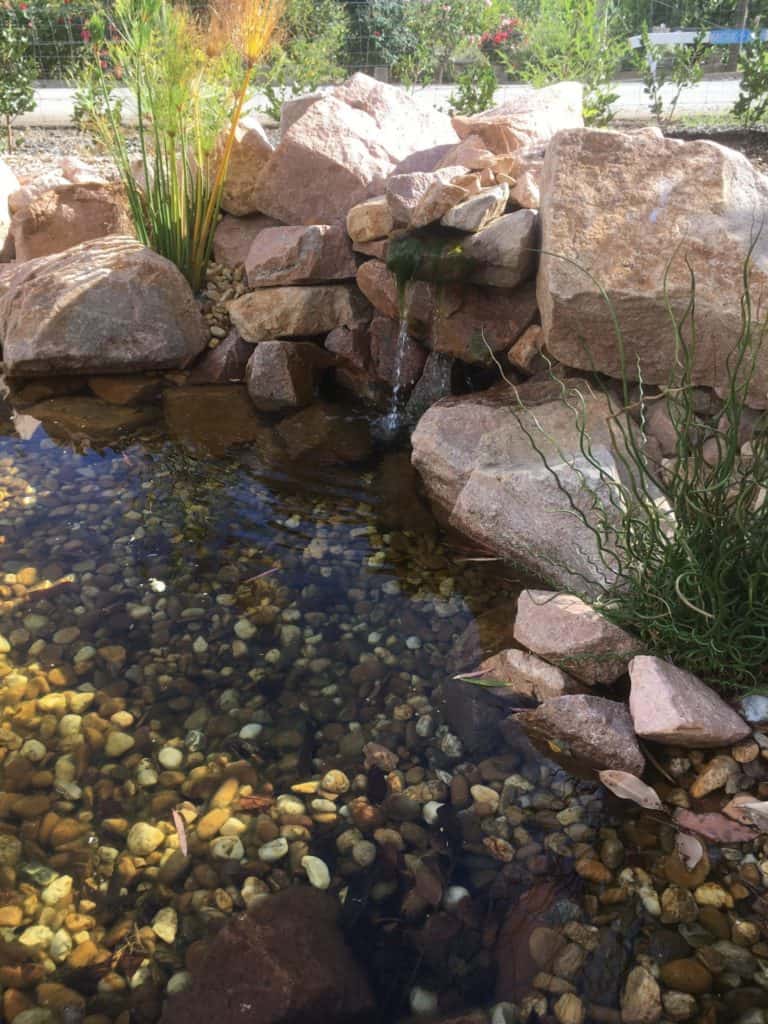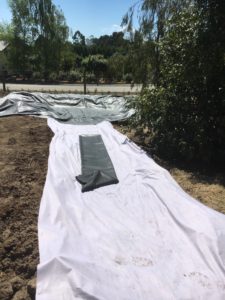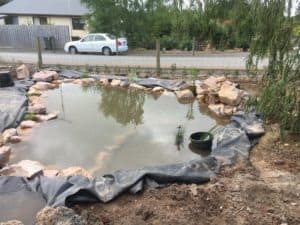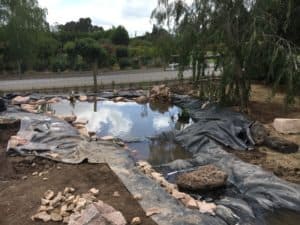What is a wildlife pond? Why build one?
A Wildlife pond is just a body of water for the main purpose of providing shelter and food to local wildlife. The water provides breeding grounds for frogs and dragonflies and a drinking source for birds and mammals.
Wildlife
We built one for many reasons, it brings the local wildlife up close, we love water in the garden and a wildlife pond is much easier to construct and maintain than a fish or koi pond, plus other wildlife would probably eat the fish. The different animals and insects that it brings into the garden help to control the problematic garden pests.
Climate
The open body of water along with the surrounding plants create a mini micro climate. Over time, this should allow us to grow a more diverse range of plants in the gardens surrounding the pond.
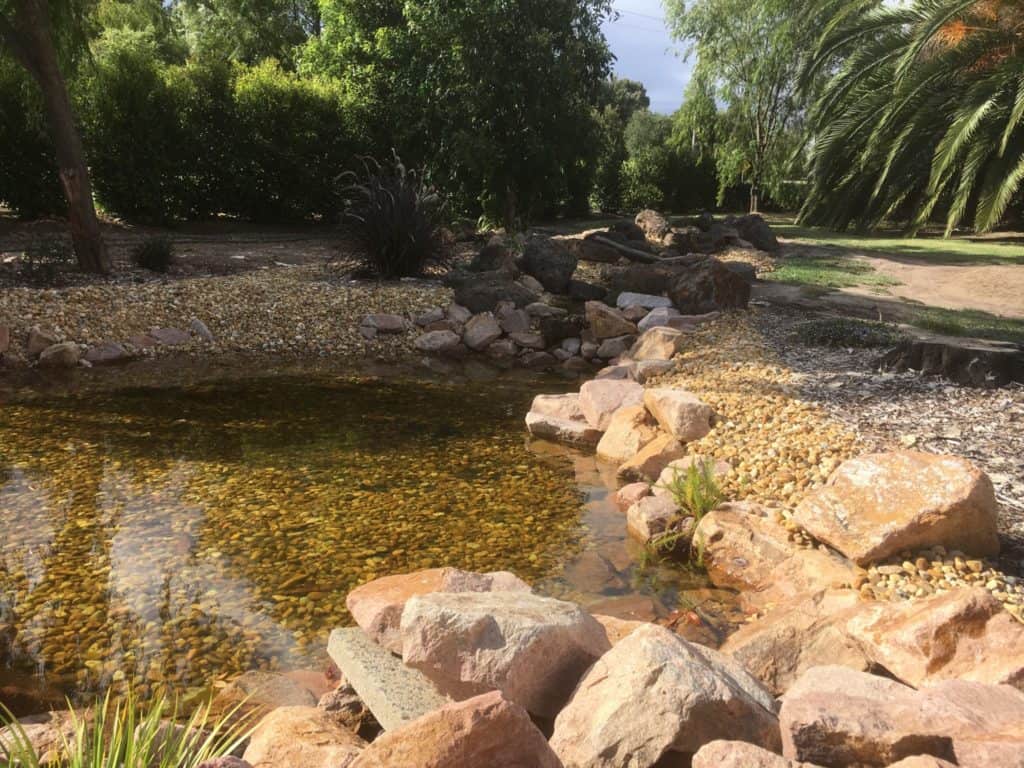
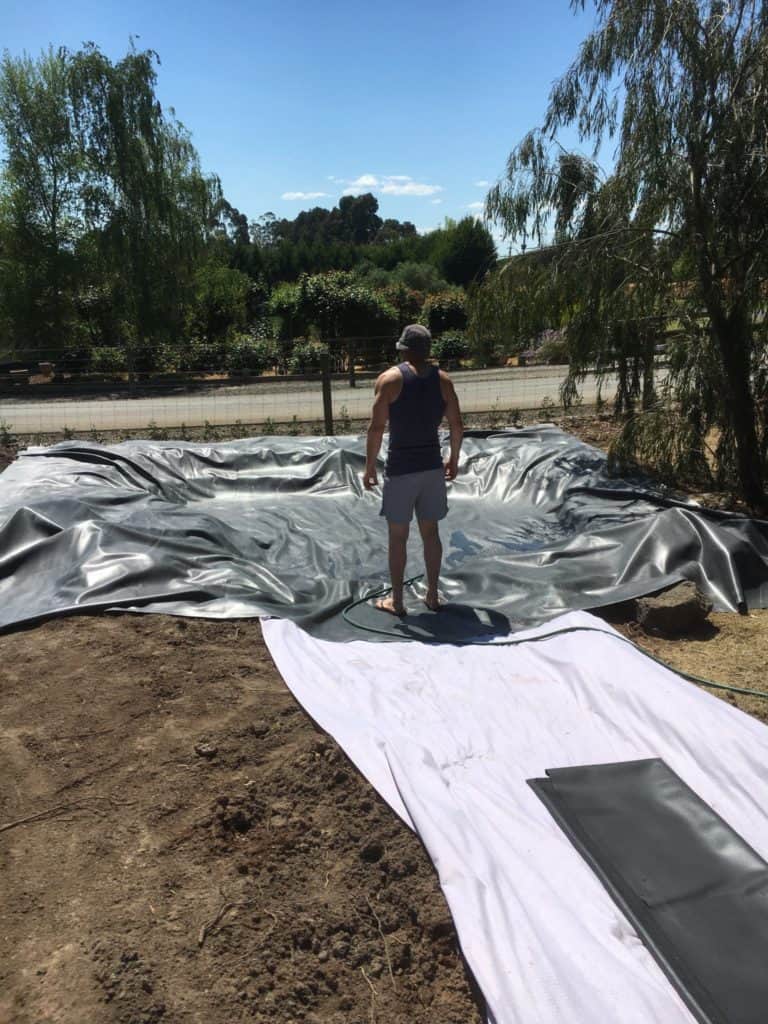
Tips for building a DIY Wildlife Pond
Dig or mound
1. You don’t necessarily need to dig a hole. Parts of our pond are built up rather than dug out. This saved me lots of work and gave me a great place to put the soil that i did dig out.
Shelves
2. Build shelves into the design. Shelves provide different depths for placing water plants, they also allow any animals that might fall in, an easy escape.
Protect the liner
3. Make sure you cover the side walls with rock. This will protect the liner from any animals with sharp claws that do decide to take a dip.
Plants
4. Leave some pockets/gaps in the rocks around the walls where you can put plants. The plants will soften the edges of the pond.
Filling
5. Fill the pond a little bit at a time as this will help to get the creases out of the liner and give you a snugger fit.
Avoid joins
6. Use just one piece of liner, you don’t need the headache of trying to join multiple pieces together.
Shaded site
7. Position the pond in a shaded spot as this will help prevent algae growth.
Avoid runoff
8. Try and avoid positioning the pond in an area where water runoff can enter the pond. Runoff water is rich in nutrients which can also contribute to algae growth.
Do I need to circulate the Water? How to stop algae growth. What materials are needed?
Pump or no pump?
When researching ideas for our wildlife pond i came across quite a few books and articles that said its ok not to have a pump in the wildlife pond.
The reasoning was that over time a layer of sludge builds up on the bottom of the pond. In this layer of sludge are millions of microscopic beneficial bacteria which will consume any excess nutrients.
Without circulation it’s very important to utilise lots of plants, especially oxygenators such as water hyssop, common water milfoil, water lilies etc. Take a look at our DIY grey water wetland for more information on beneficial bacteria.
I Chose to circulate our pond with a 24volt pump, this allowed me to run electricity up to the pond without needing an electrician. It also allowed me to create a stream and a small waterfall connected to the pond.
Algae growth
Most ponds will get algae at some stage.About 2 weeks after our pond was constructed the water looked like pea soup.
Luckily i’d read a lot about ponds before building one, so i didn’t panic! I knew that because the pond was new it had no beneficial bacteria so i played the waiting game and after 2 weeks we had beautiful clear water.
But algae can strike at any time. There’s 3 things that algae need, light, water and nutrients.
If we can eliminate one we can eliminate an algae problem. Obviously we can’t eliminate the water.
But we can provide shade by planting larger shrubs and trees around the pond, this obviously takes time as the plants grow.
A quicker solution is to add floating water plants which will provide the water with shade much faster.
To remove nutrients we need to add lots of water plants. The water plants will outcompete the algae for the available nutrients. Theres no exact number or formula that will work for your individual circumstances.
So if there’s algae add more plants, or create more shade. You and the pond will find the right balance. Remember to be patient, algae is unsightly, but it’s not unhealthy, even a healthy pond will have small amounts.
Materials
Your biggest expense is going to be the pond liner. I recommend going with EPDM rubber liner. These liners have been used for over 50yrs.
They are UV stabilised and highly puncture resistant. They are safe for use with fish and won’t leach any harmful chemicals into the water or soil.
I also recommend a geo textile underlay, this will help protect your liner from roots and other sharp objects. Of course you want to make sure you remove any problematic debris throughout the pond construction.
It’s optional if you want to recirculate the water. I’d recommend it, unless you’re in a really high rainfall area where your pond is constantly overflowing.
We bought an energy efficient 24volt pump on ebay, if you’d like to add a stream or waterfall like we did, you’ll need some ribbed hose. Otherwise just have the pump as a fountain.
That’s about you’ll need to get started. I hope this helps you out with your project.
